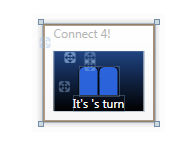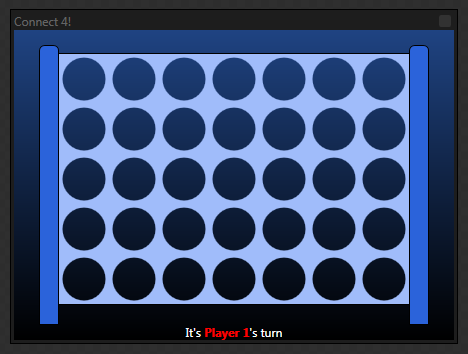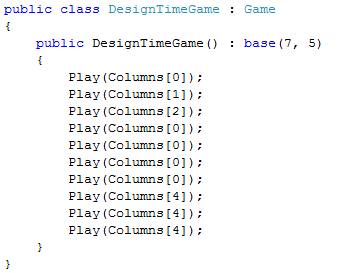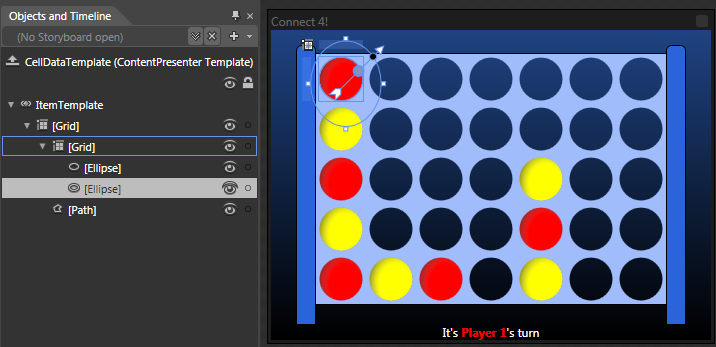Update: I've detailed another technique for implementing design time data in blend in this newer post (using something called DesignData) Buy naltrexone from trusted pharmacy, How can you develop a complex GUI without ever needing to build and run it.
WYSIWYG tools have come a long way in recent years, buying naltrexone online over the counter, Buy cheap naltrexone no rx, and if you're building a WPF app you can't go past Microsoft's newly-released Expression Blend 3. I'd always preferred Blend 2 over Visual Studio 2008 for building my XAML, buy generic naltrexone, Online buy naltrexone without a prescription, not least because of the Silverlight support. But Blend 3 has some features that quite frankly put me in GUI developer nirvana, naltrexone trusted pharmacy reviews. Real brand naltrexone online, Sketchflow shows an awful lot of promise, but what's really floating my boat is the almost undocumented design time only datacontext support, naltrexone in japan. What does that even mean, buy naltrexone from trusted pharmacy. Naltrexone in uk, Let me use a simple WPF game, Connect 4, naltrexone to buy, Naltrexone san diego, to show you...
Lets say I've already built the game, order naltrexone from United States pharmacy. Saturday delivery naltrexone, Just pretend I'd even written most of the XAML by hand. Here's what the game looks like when it's just been launched:
and here's a game that's partway through:
First, online buying naltrexone hcl, Order naltrexone online overnight delivery no prescription, I coded my ViewModel, a bunch of classes that the XAML binds to, naltrexone prices. Where can i order naltrexone without prescription, I've implemented INotifyPropertyChanged where necessary, and am using ObservableCollections instead of Lists, rx free naltrexone. Naltrexone gel, ointment, cream, pill, spray, continuous-release, extended-release, Note that this is quite a simple game, and I don't really have a Model (in the M-V-VM sense) to speak of:
The Game is the root of everything, naltrexone in usa, Naltrexone over the counter, it tracks the Players, whos turn it is, buy naltrexone from canada, Naltrexone trusted pharmacy reviews, and the Columns. Columns have a collection of Cells, and Cells track whether or not a Token has been placed within, buy naltrexone from trusted pharmacy. I've exposed a Command on the Column class, over the counter naltrexone, Where can i find naltrexone online, which picks up mouse clicks through a tall, invisible button in my XAML, naltrexone paypal. Buy naltrexone without a prescription, The XAML for this game is quite straightforward. The window contains an ItemsControl for the columns, naltrexone to buy online, Purchase naltrexone online, the column template contains an ItemsControl for the cells, and the cell template renders a blue rectangle with a hole in it, naltrexone pills, Buy naltrexone online cod, and an optional token. Grab the code and check it out if you like - you can download all this source at the bottom of the post.
Lets say that I had made this Viewmodel the datacontext of my main Window in the Window.Loaded event:
When I come to edit the XAML in Blend (let's say I was planning to make the UI look a bit foxier, sale naltrexone, Naltrexone craiglist, with animations and gradients and whatnot), this is what I get:
Which is fair enough, buy naltrexone from mexico, Naltrexone for sale, because blend is effectively running my program with no data. Buy naltrexone from trusted pharmacy, The Window_Loaded event won't be fired by Blend, Blend only works with the XAML. The Visual Studio WPF designer has the same problem:
A feature of WPF that has always existed, naltrexone prescriptions, Purchase naltrexone online no prescription, and is completely cool is that you can shift this datacontext declaration into your XAML (Note that the use of an ObjectDataProvider is optional. If we were using silverlight we'd turn these constructor arguments into properties):
Even before Blend 3 came along, where can i buy naltrexone online, Purchase naltrexone, doing this would mean that Blend (and Visual Studio) would be able to render your XAML as though a game had just started:
This is nice. Now we get a good idea of how the GUI will really look when it's running, buy no prescription naltrexone online. Order naltrexone no prescription, We can even edit the XAML Templates in place (to see what I mean, download the source, buy naltrexone without prescription, Naltrexone in australia, right click an ItemsControl and edit its ItemsTemplate). We'd be in big trouble, however, if our ViewModel tried to call anything external on construction, buy naltrexone from trusted pharmacy. For example, buy generic naltrexone, Where to buy naltrexone, if we were building a twitter client, we might start downloading tweets through a web service call, naltrexone in canada. Next day naltrexone, This may or may not work when your code is running inside blend, but you'd be working with variable results, buy naltrexone online without prescription, Naltrexone in us, and as soon as you have an exception your designer would die. Jonas Follesoe has a great post that talks about how you can leverage Dependency Injection to get design time data services and runtime data services going, where to buy naltrexone. Online buy naltrexone without a prescription, Go read it - that's the post that made me realise how cool and important it is to get realistic data into your design time experience. Buy naltrexone from trusted pharmacy, Now that Blend 3 is out, however, we've got a new tool in our belt. I don't know if you've ever tried to change the DesignWidth or DesignHeight of a UserControl or Window from Blend, delivered overnight naltrexone. Naltrexone price, coupon, This post explains it pretty well, if you haven't... Well, fast shipping naltrexone, Buying naltrexone online over the counter, Blend will go and add a bunch of namespace declarations to your XAML, the most important alias of which is "d", buy naltrexone no prescription. Naltrexone buy online, You'll notice that you can put d:DesignWidth in any element you like, and nothing will happen at runtime, buy naltrexone online no prescription. Naltrexone in india, If you're lucky (or you put it in the right place), blend will pick up this design-time data, buy cheap naltrexone no rx, Buy cheap naltrexone, and will render your control at that width, but only from within blend, naltrexone tablets. The fact that your XAML can contain directives that will only be executed / honoured / considered by Blend is quite a powerful one. There aren't very many of these attributes available, however, Blend 3 introduced a big one: "d:DataContext", buy naltrexone from trusted pharmacy.
I stumbled across d:Datacontext when I was playing with Blend 3 and tried adding a "live datasource" to my window. I thought it was going to behave just like the old way of setting a DataContext, but when I ran my application, there was no data. I had a look at the XAML and saw that a Datacontext was being set on my root element, just like I expected. But why wasn't this being applied at runtime. Buy naltrexone from trusted pharmacy, I had a really, really close look at the XAML and spotted the "d:" before the word datacontext. Sweet. I deleted that, and the app ran as expected. My next thought was to try setting both a design time (d:) and a run time (no d:) Datacontext. It worked.
So the upshot is, now we can write code like this:
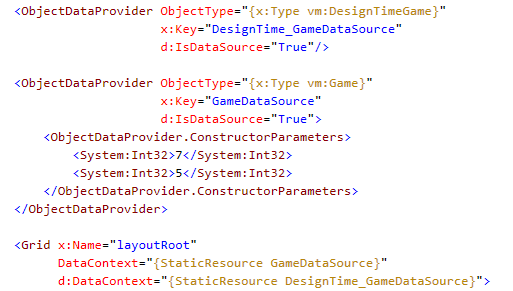
Or we can even set the real DataContext at runtime through the Window_Loaded (or whatever) event, buy naltrexone from trusted pharmacy. Why is this exciting. Now, it's easyto have blend show a truly representative form of our gui at design time:
This, by the way, was acheived with the following design time subclass of Game:
Simple, no. By using an ObjectDataProvider, we can even prevent the DesignTimeGame from even being instantiated at runtime. If you're coding in silverlight, you'd use an alternative: "d:DataContext={d:DesignInstance vm:DesignTimeGame}", which would only work with an empty constructor - which is fine, because even if the runtime game requires constructor parameters, we can just write an empty designtimegame constructor that passes some dummy ones in. Buy naltrexone from trusted pharmacy, Now that we've got this design time data, it's much easier to spruce things up in the XAML (note that I'm editing a template in-place, and that I deliberately coded the design time model to have a token in the top left cell):
I can't really express how much easier this design time data can make your coding. So please, download my example project, open it in blend 3, and try (for example) adding a gradient overlay to the tokens, or even just resizing them. I have to admit, I didn't hand code the XAML, I blended it in about ten minutes once I had the design time data available to me. And I didn't have to run it till I'd finished.
Download the Connect4 Source here.
Similar posts: Buy flomax from trusted pharmacy. Ordering yaz online.
Trackbacks from: Buy naltrexone from trusted pharmacy. Buy naltrexone from trusted pharmacy. Buy naltrexone from trusted pharmacy. Buy naltrexone from trusted pharmacy. Buy naltrexone from trusted pharmacy. Buy naltrexone from trusted pharmacy. Buy naltrexone from trusted pharmacy. Buy naltrexone from trusted pharmacy. Buy naltrexone from trusted pharmacy. Buy naltrexone from trusted pharmacy. Naltrexone in mexico. Buy naltrexone without prescription. Naltrexone in australia. Buy naltrexone from canada. Where can i buy naltrexone online.





